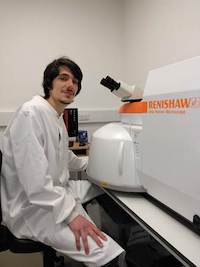Channels
Special Offers & Promotions
Detecting Counterfeit Coconut Water Using Renishaw
 Coconut water has seen a recent boom in popularity. It's a very lucrative market, with London, England, being the biggest consumer of coconut water in the world (per head).
Coconut water has seen a recent boom in popularity. It's a very lucrative market, with London, England, being the biggest consumer of coconut water in the world (per head).
There are at least 40 brands of coconut water in the United Kingdom alone and it can cost up to £4 per litre. With only five countries in the world supplying the majority of coconut water to the West, this surge in popularity, and resulting imbalance between supply and demand, has led to criminal activity in the supply chain. Scientists at the University of Manchester are using a Renishaw inVia™ confocal Raman microscope to study the adulteration of coconut water.
In 2017 a national food-crime investigation seized 400 tonnes of coconut water at the port of Felixstowe, England. Tests showed that seven out of the twelve brands imported had been adulterated.
Prof. Roy Goodacre, from the Manchester Institute of Biotechnology, heads the group that is conducting research into fake coconut water. His research student, Mr Paul Richardson, used a Renishaw inVia Raman microscope to detect and quantify the adulteration of fresh coconut water, stretched with water-sugar mixtures.
One of the main challenges of this study was to mimic typical adulteration of fresh coconut water, with a water/sugar mix used to maintain a constant sweetness. Using the inVia Raman microscope and chemometrics, they were able to detect adulteration with three different sugar solutions. This confirmed that, with optimisation, Raman spectroscopy has the potential to be used as a fast and reliable screening method for the detection of the stretching of coconut water, even if masked with very low levels of sugar.
When asked why the group chose to use Raman spectroscopy for this research project, Mr Richardson said: “It is a fast and relatively inexpensive analytical method with the potential to be highly portable. Furthermore, it differs from the methods currently in place (SNIF-NMR* and IRMS**) in that it requires no sample preparation, allowing it to potentially be used as an effective screening method at points of entry.”
Mr Richardson continued: “The inVia system is a powerful Raman microscope which, with appropriate training, can allow the user to easily test and use a multitude of different settings including laser strength, acquisition parameters, and grating. The ability to easily test different parameters and optimise our methods gave us more confidence in the detection capabilities of our models. Furthermore, the machine's sensitivity allowed us to provide stronger evidence for our models.
“My favourite aspect of the inVia microscope was the ability to automate sampling. As my work involved sampling multiple sets of 21 samples, I could simply prepare them, load them up on a 96-well plate, and run several hours of analyses overnight. Given that I had limited time for research, this allowed me to obtain more high-quality results, as I never had to compromise between quality and quantity. Along with those highlighted above, a great advantage of the inVia microscope, compared to other spectrometers I have used, is the small volume required for analysis. While low stock was never an issue for me, working with volumes under 1 ml made my sample sets far easier to generate and keep track of.”
Mr Richardson summarised the use of the inVia microscope for this research by saying: “It is a great tool for research. Along with being a powerful spectrometer with microscopy capabilities, it has a multitude of useful features that simplify research. The ability to modify various parameters allows for diverse research to be performed on the same machine, and the small volumes required make it ideal for biological research. Finally, the capacity for automation allows for far greater efficiency in data gathering.”
Mr Richardson and his colleagues have recently published a paper on this work: Paul I.C. Richardson, Howbeer Muhamadali, David I. Ellis, Royston Goodacre Rapid quantification of the adulteration of fresh coconut water by dilution and sugars using Raman spectroscopy and chemometrics, Food Chemistry, Vol 272, 2019, Pages 157-164, ISSN 0308-8146, https://doi.org/10.1016/j.foodchem.2018.08.038
Media Partners


